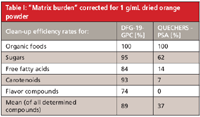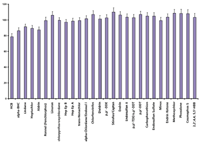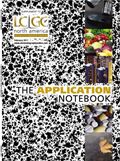GPC Clean-up for Pesticide Residue in Fatty Food
AGPC column and organic solvents are used to selectively pass large macro molecules such as lipids, resins, waxes, and other compounds from sample extracts while retaining the smaller target analyte molecules in the pores of the gel.
Pickering Laboratories Corporation
AGPC column and organic solvents are used to selectively pass large macro molecules such as lipids, resins, waxes, and other compounds from sample extracts while retaining the smaller target analyte molecules in the pores of the gel. A large amount of unwanted coextractives are eliminated.
The desired analytes are displaced from the gel with an organic solvent, and depending on the method, are then concentrated to a desired volume on the GPC Ultra. Following clean-up, the solution is analyzed with an appropriate instrument and detector, such as a gas chromatograph with an MSD or ECD.
We demonstrate excellent results and recoveries for a variety of pesticides in fatty tissues. In our example, this is a sample of rendered chicken fat.

Table 1
Project Overview
A sample of 0.0 g of melted chicken fat was dissolved in cyclopentane, then spiked with 200 ppb of the pesticides listed in the table "Recovery Graph Data." These samples were cleaned up with a GPC Ultra using the conditions described below. We ran a total of 60 samples over the course of 3 days: 20 samples each day.
The cleaned extracts were then analyzed indepentendly by another laboratory using a GC-ECD to determine recovery rates.

Figure 1: Meat sample recoveries.
GPC Ultra Parameters
Column: D20 (P/N GPC40011) 20 mm ID × 425 mm 2.5 mL sample loop
Program 5 : GPC Sample preparation with solvent exchange and subsequent preparation of aliquots 2× solvent exchange
Mobile Phase: Ethyl Acetate / Cyclopentane (70:30)
Flow Rate: 5 mL/min
GPC forum: 9 min
GPC Main Fraction: 20 min
GPC Tailing: 4 min
Pre-rinsing Solvent: Acetone
Main Rinsing Solvent: EthylAcetone/Cyclopentane (70:30)
Solvent Exchange: Isooctane
Heating Bath Temperature: 40 °C
Pressure Phase 1: 180 mbar
Pressure Phase 2: 170 mbar
Pressure for Solvent Exchange: 90 mbar
Conclusion/Discussion
The Recovery Data Graph above shows the effectiveness of the GPC Ultra Cleanup. The GPC Ultra performed a liquid/liquid solvent exchange, preventing the system from going to dryness, which in turn avoids high losses of volatile compounds. Recovery rates were between 79–110%.
The GPC Ultra is designed to eliminate carry-over and cross-contamination between samples and the spinning evaporation chamber is designed for reproducible evaporation and rinsing. These features enable reliable sample clean-up for improved analysis.
References
(1) Poster presentation "Development of clean-up procedures to minimize interfering Matrix-effects in residue analysis" by P. Steinbach, K. Sinderhauf, and P. Voegler, of Central Laboratories Friedrichsdorf, Germany and W. Schwack of Institute of Food Chemistry, University of Hohenheim, Germany.
Pickering Laboratories
1280 Space Park Way, Mountain View, California 94043
tel. (800) 654-3330, fax (408) 694-6700
Website: www.pickeringlabs.com

Analytical Challenges in Measuring Migration from Food Contact Materials
November 2nd 2015Food contact materials contain low molecular weight additives and processing aids which can migrate into foods leading to trace levels of contamination. Food safety is ensured through regulations, comprising compositional controls and migration limits, which present a significant analytical challenge to the food industry to ensure compliance and demonstrate due diligence. Of the various analytical approaches, LC-MS/MS has proved to be an essential tool in monitoring migration of target compounds into foods, and more sophisticated approaches such as LC-high resolution MS (Orbitrap) are being increasingly used for untargeted analysis to monitor non-intentionally added substances. This podcast will provide an overview to this area, illustrated with various applications showing current approaches being employed.

















